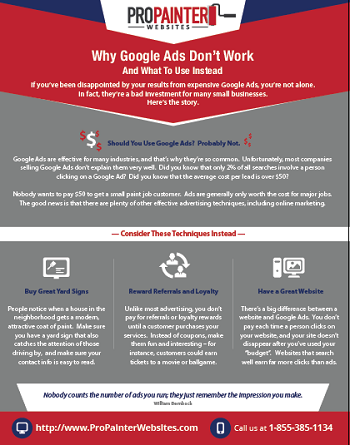Understand Exactly How Seasonal Conditions Affect The Success Of Business External Painting And Find Out The Ideal Durations To Guarantee Long-Lasting Outcomes For Your Task
Understand Exactly How Seasonal Conditions Affect The Success Of Business External Painting And Find Out The Ideal Durations To Guarantee Long-Lasting Outcomes For Your Task
Blog Article
Article Writer-Leach Bagger
When you're planning an industrial exterior paint job, seasonal aspects can make or break your results. You'll wish to think about exactly how temperature level and moisture impact paint application and drying times. Selecting apartment painting service can ensure your paint sticks effectively and lasts longer. However which periods are absolutely the most effective for this type of work? Let's discover the key elements that can influence your project's success.
The Effect of Temperature Level on Paint Application
When you're preparing a business external painting job, the temperature level can dramatically impact just how well the paint sticks and dries out.
Ideally, you wish to repaint when temperatures range in between 50 ° F and 85 ° F. If it's too cold, the paint might not treat correctly, bring about issues like peeling or breaking.
On the flip side, if it's as well warm, the paint can dry too swiftly, preventing appropriate adhesion and resulting in an irregular finish.
You need to also think about the time of day; morning or late afternoon provides cooler temperatures, which can be a lot more desirable.
Always examine best professional painters for the certain paint you're using, as they frequently supply advice on the perfect temperature array for ideal outcomes.
Humidity and Its Result on Drying Times
Temperature level isn't the only environmental variable that influences your commercial external painting project; humidity plays a significant duty as well. High moisture degrees can decrease drying out times substantially, impacting the overall quality of your paint job.
When the air is filled with dampness, the paint takes longer to cure, which can cause concerns like poor bond and a higher threat of mold development. If you're painting on a particularly humid day, be planned for extensive delay times in between layers.
It's essential to keep an eye on local climate condition and plan accordingly. Preferably, aim for humidity levels in between 40% and 70% for optimum drying.
Keeping these consider mind ensures your task stays on track and supplies a lasting surface.
Best Seasons for Commercial Outside Paint Projects
What's the best season for your business exterior paint projects?
Springtime and early fall are usually your best bets. Throughout these periods, temperatures are mild, and humidity degrees are usually reduced, developing optimal conditions for paint application and drying out.
Prevent summer season's intense heat, which can create paint to dry also promptly, resulting in bad bond and surface. In a similar way, winter season's cool temperatures can impede proper drying out and treating, running the risk of the long life of your paint task.
Go for days with temperatures between 50 ° F and 85 ° F for optimal results. Keep in mind to examine the neighborhood weather report for rainfall, as damp problems can spoil your task.
Planning around these variables ensures your paint job runs efficiently and lasts much longer.
Conclusion
Finally, intending your business external paint jobs around seasonal considerations can make a substantial distinction in the end result. By organizing job throughout the perfect temperature levels and moisture degrees, you'll ensure much better adhesion and drying times. Remember to keep an eye on local weather report and choose the right time of year-- springtime and early fall are your best bets. Taking these actions will help you attain a long lasting and specialist finish that lasts.
